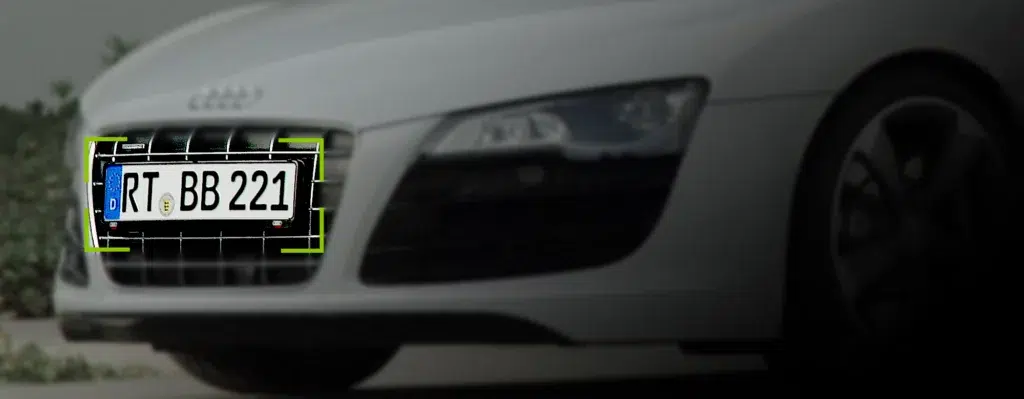With the rise of innovative parking solutions, ticketless parking systems have become a popular choice for businesses and consumers alike. But how exactly does ticketless parking work, and what makes it so effective in enhancing traffic flow, reducing environmental impact, and improving user experiences? Let’s explore the technology behind it and understand how it all comes together.
What is Ticketless Parking?
Ticketless parking eliminates the need for traditional paper tickets when entering or exiting parking facilities. Instead of grabbing a physical ticket upon entry, the system uses License Plate Recognition (LPR) technology to identify vehicles. LPR Cameras automatically capture the license plate, which acts as the “virtual ticket” throughout the vehicle’s stay.
Once the parking session is complete, the system calculates the parking fee based on the time the vehicle spent in the facility. The process is seamless and environmentally friendly, reducing both paper waste and traffic congestion at parking entrances.
License Plate Recognition (LPR) Technology
LPR technology is at the heart of ticketless parking systems. These cameras are designed to recognize license plates with precision, even at high speeds or in varying lighting conditions. When a vehicle enters the parking lot, the LPR Camera captures the license plate and records the entry time. This information is then stored in a temporary database, allowing the system to calculate parking fees when the vehicle exits. The automated parking system provides a secure and efficient process for all users.
Digital Signage for Enhanced User Experience
Many modern ticketless parking systems also integrate digital signage. These signs can display welcome messages to registered vehicles, enhancing the customer experience. For businesses, this feature adds a personal touch, showing customers that their needs are being attended to from the moment they arrive. Personalized signage can even display the driver’s license plate on a screen, offering a more interactive and user-friendly parking experience.
How Does Ticketless Parking Work?
Ticketless parking systems rely on several key components to function effectively. From entry to exit, the process is fully automated, providing a hassle-free parking experience for drivers.
No Paper Tickets, No Hassle
When entering a parking lot, drivers no longer need to roll down their windows to grab a ticket. Instead, the LPR Camera captures the license plate, recording both the vehicle’s arrival time and the license plate number. This eliminates the need for physical interaction, making the entry process smoother and faster.
Automatic Triggers
Unlike traditional parking systems, ticketless systems don’t require a physical trigger, such as inserting a ticket at the exit gate. The system automatically detects the vehicle’s presence through the LPR Camera and processes the information without manual intervention. This parking solution is designed to ensure a smooth flow of vehicles and minimize delays.
How to Pay in a Ticketless Parking System?
Payment in a ticketless parking system is just as simple as entering. Once the vehicle’s parking session is over, the system calculates the parking fee based on the time spent in the facility. There are several ways to pay:
Payment Kiosks
Many parking facilities equipped with ticketless systems include payment kiosks located within the garage. Drivers can enter their license plate number at the kiosk, which will display the amount owed. They can then pay using cash, credit, or other electronic payment methods. The parking management system ensures that the process is quick and secure, reducing the time spent at the payment kiosk.
Online Payment Options
Some systems allow drivers to pay directly online, offering a more convenient solution for those who prefer not to visit a kiosk. When the license plate is registered, the parking fee can be settled via a mobile app or website before leaving the lot. Online payment options streamline the entire process and allow users to avoid unnecessary delays, creating a seamless and cashless parking experience.
Parking Rates and Vehicle Adaptation
Ticketless parking systems are designed to provide flexibility in terms of parking rates and vehicle types. This makes the system adaptable to a variety of parking infrastructures and ensures that drivers pay for exactly the amount of time they use.
How Parking Rates are Calculated
Parking fees are calculated based on the duration of the vehicle’s stay. The LPR Camera records the entry and exit times, ensuring that the customer is charged accurately. This eliminates potential errors often associated with manual systems and provides a transparent payment process. The system adjusts parking rates dynamically, allowing for time-based charges and real-time adjustments based on the length of the stay.
Adapting the System for Different Vehicle Types
While most systems are currently designed for standard cars, there is ongoing development to adapt LPR Cameras to recognize different types of vehicles, including motorcycles and larger vehicles such as trucks and electric scooters. This feature, expected to roll out in the near future, will expand the system’s versatility, making it applicable to a wider range of parking needs. The ability to recognize multiple vehicle types enhances the parking flexibility and ensures that no vehicle is excluded from this smart parking solution.
Data Storage and Security in Ticketless Systems
One common concern with ticketless parking systems is data privacy. When a vehicle enters a parking facility, the system temporarily stores the license plate information to calculate parking fees accurately. However, it’s important to note that the data is not stored indefinitely.
Once the parking session is complete and the payment is made, the license plate data is purged from the system. Moreover, most ticketless parking systems operate independently from the internet, reducing the risk of cyber threats or unauthorized access to personal information. Data encryption is often used to further protect the information stored during the parking session.
Benefits of Ticketless Parking
Ticketless parking systems offer several advantages, making them a superior choice compared to traditional ticket-based systems. From improved traffic flow to better data management, these systems revolutionize the way parking is managed.
Traffic Fluidity and Time Savings
By eliminating the need for physical tickets, ticketless systems significantly improve traffic fluidity in and around parking facilities. Vehicles can enter and exit quickly, reducing congestion and minimizing wait times. This is particularly beneficial in high-traffic urban areas where every second counts. Additionally, the parking gate automation provided by these systems ensures smoother transitions for vehicles, especially during peak times.

Environmental Benefits
Ticketless parking systems contribute to a more sustainable parking solution. By eliminating paper tickets, they reduce waste and help conserve natural resources. Additionally, less congestion means fewer emissions from idling cars, aligning with broader environmental goals aimed at reducing urban pollution. Eco-friendly parking is increasingly important for cities aiming to reduce their carbon footprint and ensure a cleaner environment.
Enhanced User Experience
Ultimately, ticketless parking systems are designed with user experience in mind. They provide a seamless entry and exit process, saving drivers time and frustration. Moreover, the ability to pay online or via payment kiosks offers greater convenience and flexibility for users. For businesses, this improved experience helps build customer loyalty and satisfaction. Features like real-time parking updates and pre-booking parking options also allow users to plan their parking in advance, further enhancing the overall experience.
Ticketless Parking vs Traditional Parking Systems: Which Is Better?
When comparing ticketless parking systems to traditional parking systems, it’s clear that advancements in technology have significantly improved the parking experience for both drivers and operators. While traditional systems rely on physical paper tickets, modern ticketless solutions eliminate this need by using License Plate Recognition (LPR) technology to streamline the entire process. But how do these systems compare, and what are the real benefits of switching to ticketless parking?
Efficiency and Convenience
In traditional parking systems, drivers must stop at the entrance to collect a physical ticket, which can lead to traffic congestion, especially during peak hours. Additionally, losing the ticket can result in delays and frustration for both customers and parking operators.
In contrast, ticketless parking automates this process entirely. Vehicles are recognized automatically through LPR cameras, allowing for seamless entry and exit. This not only speeds up the process but also reduces the risk of errors and bottlenecks at parking gates.
Environmental Impact
One major advantage of ticketless parking is its contribution to reducing environmental waste. Traditional systems rely heavily on paper tickets, contributing to deforestation and unnecessary waste.
Ticketless solutions eliminate this problem by going completely digital, supporting eco-friendly initiatives and reducing carbon footprints. For businesses aiming to become more sustainable, adopting ticketless parking technology can align with broader environmental goals.
Cost and Maintenance
While traditional parking systems may seem less expensive at first glance, the costs associated with maintaining ticket dispensers, printers, and paper supplies add up over time. Moreover, mechanical breakdowns can lead to customer dissatisfaction and increased operational costs.
On the other hand, ticketless systems require less maintenance since they rely on LPR technology and cloud-based management systems, reducing long-term costs and offering a more reliable solution.
User Experience
The user experience in a ticketless parking system is far superior to that of a traditional system. With ticketless parking, customers enjoy a fully automated and frictionless experience, from entry to payment. Options such as online payments or mobile app integration allow users to pay for their parking remotely, avoiding the need to queue at a kiosk.
In contrast, traditional parking systems require manual interaction, which can slow down the process and detract from overall user satisfaction.
Security and Data Management
Traditional parking systems offer limited security since paper tickets can be easily misplaced or forged. Ticketless parking systems, on the other hand, use advanced technologies such as data encryption and LPR to track vehicles securely throughout their stay.
Additionally, the digital nature of ticketless systems enables better data management, providing operators with valuable insights into parking patterns, peak usage times, and customer behavior, helping to optimize operations.
Future-Proofing with Advanced Technology
As cities move toward smart city infrastructure, ticketless parking systems are becoming the preferred choice. They are designed to integrate with emerging technologies such as AI and EV charging stations, offering a future-proof solution.
Traditional systems, by contrast, may struggle to adapt to these new demands, making ticketless parking a more scalable and forward-thinking choice.
System TV’s Parking Solutions: Enhancing the Ticketless Parking Experience
System TV offers advanced solutions that complement and enhance ticketless parking systems through the integration of real-time digital signage. These solutions are designed to optimize parking management, improve user experience, and increase profitability for parking operators.
LPR Technology with Digital Signage

By combining LPR technology with digital signage, System TV automates parking management, displaying real-time information such as available spaces, traffic tips and personalized messages for arriving visitors.
Remote Parking Rate Management and Dynamic Pricing
System TV’s solutions allow parking operators to remotely manage and adjust parking rates in real-time. With dynamic pricing, facilities can automatically adjust rates based on demand, optimizing revenue while ensuring a smooth flow of vehicles.
Parking Guidance Systems
System TV’s Parking Guidance System helps direct vehicles to available spaces, reducing search times and improving traffic flow within parking lots. Real-time data displayed on digital signage guides users efficiently, transforming the parking experience for both drivers and operators.
Advertising and Revenue Growth
In addition to improving functionality, System TV’s digital signage can also serve as a platform for advertising, maximizing the use of digital screens to increase profitability. Parking facilities can broadcast ads and promotional content, creating additional revenue streams while engaging visitors in meaningful ways.



